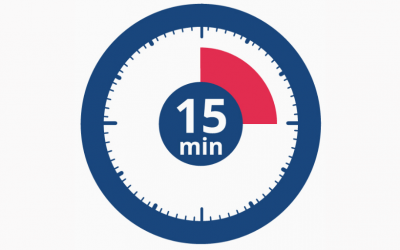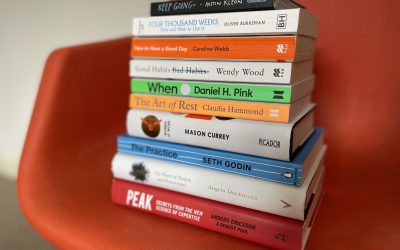Everything you need to know about working with beta readers – who they are, the benefits of using them and practical tips on how to recruit, brief and communicate with them.
It’s publishing folklore – how JK Rowling was famously rejected by multiple publishers before Bloomsbury took on Harry Potter. The series changed publishing, influenced an entire generation and created the first female author to become a billionaire. The backstory is just as compelling as the best-selling series.
Harry Potter and the magic beta reader
Nigel Newton, the founder and chief executive of Bloomsbury gave a chapter from the draft manuscript of Harry Potter and the Philosopher’s Stone to his reading obsessed eight-year-old daughter Alice. Newton told a journalist, “She came down from her room an hour later glowing, saying, ‘Dad, this is so much better than anything else.’ She nagged and nagged me in the following months, wanting to see what came next.”
Many publishers were given the very same sample – all of them rejected it. Newton took a punt on this unknown first-time author based on the feedback of a beta reader, someone in the target market of the book, who just happened to be eight years old.
What are beta readers?
Beta readers are not experts. They are not editors, nor are they people who read slush pile submissions or review manuscripts, subject specialists or sensitivity readers. They are not professionals and they are not paid for it.
The ideal beta reader is someone who knows what they like to read and has opinions. They will read a work in progress and offer feedback to the author from the point of view of an average reader. They are happy to invest their valuable time and effort into reading and feeding back because they want to.
Beta readers exist across all types of writing, whether you’re writing fan fiction or an academic monograph, publishing a collection of haikus or historical essays, there will someone who wants to read your words. That’s the heart of the beta reader relationship: readers love to read and writers want feedback.
How I work with beta readers
I signed a contract for my first book How to Have a Happy Hustle in 2018. While I had excellent support from my agent and publisher I wanted to test the concept and draft chapters with real readers who would feedback as I wrote. My genre is ‘how-to’ non-fiction books so I looked for people who were interested in the subject of innovation, who struggled to make ideas happen and were keen to learn more. In short, they wanted my book to help them solve a problem they had.
>> Read more: How to write a book in 100 days
I set up a beta reader group – a mix of my target audience and people who worked in innovation or startups. They became a sounding board, my trusted advisers and cheerleaders, and some have become firm friends. As well as helping me test my ideas (and writing style) it was a brilliant form of accountability.
As I wrote, I kept the group up to date with email updates. I ran everything past them: from the table of contents, the book title, cover design and the all-important reading of the first draft. Everyone was named in the acknowledgements and many people went on to buy the book and support the launch – though that isn’t part of the process (I’ll share advice in another piece about forming a launch ‘street team’ and the anxiety-inducing request for ‘blurbs’ which are both part of the promo work of an author).
My book was so much better for their feedback, so when my co-author Chris and I started working on our new book, The Writing Playbook, I was determined to get the support of more volunteer readers.
>> Read more: The complete guide to writing accountability – hold yourself to account and use others to help you achieve your writing goals
Why use beta readers?
Beta reading is a form of user testing. The idea behind user testing is that in order to make a product (book) that users (readers) want you need to test with them and find out what they think. I know this will make many writers feel uncomfortable! But writing needs to be read – even the most creative, experimental and esoteric of forms needs an audience.
Personally, I’d much rather someone told me the faults when I have time to fix rather than write a one star review on Amazon. Plus, they can feedback privately and spare my blushes rather than having my failings laid bare for all to see online. Finally, it’s a relationship based on communication where I can ask questions and explore what they think and why.
When product testing you need to get feedback from a range of users. Let’s imagine you are testing a can opener. In this scenario, the users are people who want the beans, that means they need to open the can. Enter the can opener, a product many of us have in our homes. But, users are not all the same – my kitchen and the way I cook will be different to yours.
If you are cooking with a child with smaller hands they will use the can opener in a different way to an adult. Likewise with someone who is left-handed or has arthritis. What about if you work in a hotel or a café and need to open multiple cans a day? What if you’re hiking and don’t have space for a full-size can opener in your backpack? They are all users with the same need but will approach the product in diverse ways.
Our current book is about writing productivity and aimed at a wide variety of writers. I needed people who have written, are currently writing, or dream of writing – and across all genres and formats. I wanted novelists and creative writers, academics, non-fiction and business writers to become beta readers – what they had in common was the desire to overcome writing blocks and build a long-term, sustainable writing practice.
How many beta readers do you need?
You need to test with a range of people and and have several involved. Good practice in user testing suggests the sweet spot is 6-8 people – enough to get diversity of opinion while also spotting patterns. I’m amazed how quickly patterns emerge – EVERYONE spots the same error – and that’s what you are looking for.
Some authors with get more people involved. I like to have at least 20 people feedback because there is no such thing as an average reader and I like the range of opinions. The biggest example I’ve seen is Jake Knapp and John Zeratsky who listed 1,700 test readers in their book Make Time. I can’t even begin to imagine the logistics of that process and how to filter feedback!
It’s really up to you many you can handle. If you’re starting out, you can try a critiquing partnership where you work with one other author and feedback on each other’s work in progress. Many university departments have reading groups where peers can read and feedback in a safe space – it helps build confidence for the often brutal submission process. For one project I joined a critiquing group with 15 members which was facilitated by a professional writer and teacher.
When is best to test?
You can test at any stage of writing – for example, pitching an idea before you write or sharing a synopsis – but for most writers it’s best to wait until you’ve completed the messy creative process and have finished revising. You need to feel confident the draft is as good as you can make it by yourself. As Stephen King famously advised in his book On Writing:
“Write with the door closed, rewrite with the door open. Your stuff starts out being just for you, in other words, but then it goes out. Once you know what the story is and get it right — as right as you can, anyway — it belongs to anyone who wants to read it. Or criticize it.”
How to recruit, brief and communicate with beta readers
For my first book I used my professional network to get my target audience involved, a mix of social media, posting on a few online communities and reaching out to people I knew.
Work out who your audience is and where you might find them – for example a Facebook group, on LinkedIn, an online community or fan site. For the second book I used the Prolifiko newsletter and also asked people personally if they wanted to be part of it.
I kicked off both beta reader groups with a survey. This helped me empathise with my target readers and understand their motivation and what they struggle with. I also asked what else they liked to read and where they got information from. The survey asked them to ‘opt-in’ to being part of an email group, a necessary step in data privacy.
Also it managed their expectations. If they didn’t have time to fill in a survey they wouldn’t have time to read.
>> Read more: Keep going: 10 books to help build your writing resilience
You need to be clear what’s involved, what you expect from people and what they get in return – will they get listed in the acknowledgements, a copy of the book, a discount or a warm fuzzy feeling they’ve helped?
Ask for specific feedback, listen to it and respond – tell people what you’ve done with their comments. I love getting emails from my beta readers and often it’s the follow up conversations where the real insight happens. Just asking why they felt something can open up whole new avenues.
Support fellow writers by being a beta reader
James McConnachie, editor of The Author the magazine of the Society of Authors, said that:
“Writing can be a lonely business. Publishing can be a ruthlessly competitive one. Authorship is different: it is a fellowship and a community.” For me, being an author means helping and supporting other writers in my community. Part of that is being a beta reader for friends and people in my professional network, reading for Alison Jones, Nir Eyal, Grace Marshall and Rob Fitzpatrick amongst others.
My advice if you’d like to use beta readers the best way to learn is to be one yourself. It takes time and commitment, there is no getting away from that, so before you sign up, check what’s involved and what the expectations are.
Over the years, I’ve picked up tips on how to recruit, brief, communicate and manage readers.
Ways to gather feedback
You can gather feedback in many ways – by email, asking people to comment on an online version, to organising calls or meeting up. Grace Marshall set up small group video calls about her book Struggle, where a few of us shared feedback, sparked ideas off each other, and supported or challenged someone’s opinion. It was such a fun and lively conversation.
Cara Holland recruited people to attend workshops where she tested Draw a Better Business. She ran three sessions, each taking a couple of hours to work through exercises in the book. Cara facilitated the sessions, getting people to follow instructions, explaining the task and giving time for people to do it. She then followed up with questions, such as:
- Did the instruction make sense?
- Do you think that was a useful tool?
- Did it make any difference to you as a small business owner?
All types of book benefit from structured feedback. John Lugo-Trebble was writing a story based on a character coming of age and coming out in New York in 1993. He called it a love letter to the city he grew up in. But he no longer lived there so the details were hazy and he needed help. He recruited friends who lived, or used to live, in New York and asked about how authentic his description of the city was. The feedback from people helped him finalise the details.
He told me: “I am lucky to have a diverse group of opinionated friends and colleagues in my life who without blinking an eye will tell me whether I am on the right track or if the train has derailed somewhere. The friends from New York City were transported back to their teenage years and felt a longing for that city which they missed. While the millennial reader lamented that he wished he had lived in that city at that time.”
>> Read more: How to keep writing using rewards
For my first book in 2018 I met people for a coffee or a drink (on one occasion I ended up on a night out with a beta reader I’d only just met!) For the second book that wasn’t an option and organising groups was too logistically challenging for me – especially as my readers were scattered across the globe with time zones from Australia, Asia, Europe and north, south, east and west of the Americas. I did however set up 121 calls which were a delight.
There’s one more thing that beta readers aren’t – they are not responsible for decisions made by the author based on their feedback. Which brings me to another chapter of the story of Harry Potter and the beta readers which is less well known.
Rowling gets rejected again
When I was lowly publishing intern for an educational publisher, we were sent a copy of the now published first Harry Potter book to see if we wanted to buy educational rights. The offer was that it would be a class reader, a book that would be read in an English class and set as homework. It was tested with several teachers, in a range of schools and classes – a perfect user testing project.
The feedback was unanimous – this book doesn’t work in the classroom. The publishers I worked for rejected the offer of educational rights. Rowling chalked up another rejection. But I think the right decision was made. The Harry Potter series isn’t a class reader – it’s too long, complicated, and while it is absolutely compelling for some readers, it isn’t going to work for a whole class with mixed ability and interests.
The moral of this story is that if you are up for getting feedback you need to be open to what people tell you. And if you are lucky you might find an eight-year-old like Alice who will make you the biggest author in the world.
How to get started with beta readers
Beta readers are unpaid readers of a work in progress. Here’s some tips on how to find, recruit, brief and manage them – and enjoy the process.
- Audience: Work out who’s your target reader and where they hang out so you can recruit the right beta readers for your work in progress.
- Expectations: Be clear what’s involved, what you expect from people and what they get in return. You can use perks to boost recruitment – explain if people get free books or their name in the acknowledgements. But remember beta readers do this for love not money!
- Feedback: You’ll only get the right feedback if you ask the right questions, so think about what’s important for you to ask, or design exercises to give you what you need.
- Logistics: Think about how you’ll receive feedback, whether it is face to face, online or by email or using a collaborative writing tool like Google Docs.
- Be open: Listen, learn and use feedback to improve what you’re writing. You don’t have to accept everything that everyone says, but pick up on patterns.
- Enjoy. When you get it right, people will notice. You’ve worked hard so appreciate positive feedback and learn to take a compliment – you’ve earned it.
- Gratitude: Thank your readers – they have given up their valuable time and attention to help you. Let them know how much you appreciate them.
- Give back: Support your community of writers and become a beta reader – you’ll get as much from the experience as the writer will.




